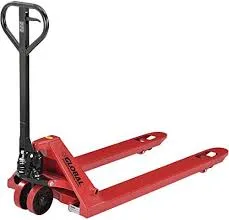


Fall Protection FAQ Essential Information for a Safer Workplace
In many industries, particularly construction, the risk of falls is a significant hazard. Understanding fall protection systems is crucial for ensuring worker safety. This article aims to address common questions surrounding fall protection to enhance awareness and compliance.
What is Fall Protection?
Fall protection refers to systems and measures implemented to prevent workers from falling to lower levels. These systems are crucial when working at heights, such as on scaffolding, roofs, or elevated platforms. Fall protection can be categorized into two main types passive and active systems.
Passive Systems These include guardrails, safety nets, and walls. They do not require user action to function effectively, providing a barrier between the worker and the potential fall.
Active Systems These involve equipment that the worker must use, such as harnesses and lanyards. Active systems require proper training and adherence to safety protocols to be effective.
Who Needs Fall Protection?
According to the Occupational Safety and Health Administration (OSHA), any worker exposed to a fall hazard of 6 feet in the construction industry or 4 feet in general industry must be provided with appropriate fall protection. This includes various job types, such as roofing, elevated platforms, and when working over dangerous machinery.
What Are the Common Fall Protection Systems?
Several fall protection systems are widely used across various industries
1. Personal Fall Arrest Systems (PFAS) These systems consist of a harness, connecting device, and anchorage point. When a fall occurs, the PFAS restrains the worker, preventing serious injury.
2. Guardrails Installed around the edges of elevated surfaces, guardrails serve as a physical barrier to prevent falls.

4. Safety Harnesses Worn by workers, harnesses distribute the forces of a fall over the body, minimizing the risk of injury.
What Training is Required for Fall Protection?
Employers are required to provide fall protection training to ensure that workers understand how to use fall protection systems correctly. Training should cover
- Understanding fall hazards Identifying falls that may occur in the workplace. - Proper use of equipment How to wear and utilize safety harnesses, lanyards, and other protective gear. - Emergency procedures What actions to take in the event of a fall, including rescue protocols. - Regular inspections How to conduct daily checks of fall protection equipment for damages or wear.
What Are the Responsibilities of Employers and Employees?
Employers must ensure that fall protection systems are in place, properly maintained, and that employees are trained to utilize them. This includes conducting regular safety audits and ensuring compliance with OSHA regulations.
Employees, on the other hand, must adhere to the safety protocols laid out by their employers. This includes wearing personal protective equipment (PPE), following safety guidelines, and participating in training sessions.
How Can Fall Risk Be Minimized?
Apart from using fall protection systems, risk can be minimized by
- Conducting job hazard analyses Assessing potential risks before commencing work. - Implementing safe work practices Establishing standard operating procedures that prioritize safety. - Keeping work areas clean and organized Reducing clutter decreases the risk of trips and falls.
Conclusion
Understanding fall protection is vital in creating a safe working environment, especially in sectors involving heights. By ensuring proper training, utilizing effective systems, and fostering a culture of safety, both employers and employees can work together to mitigate fall risks. Ultimately, the goal is to ensure that every worker returns home safely. Always stay informed about the latest regulations and best practices regarding fall protection to contribute to a safer workplace.



